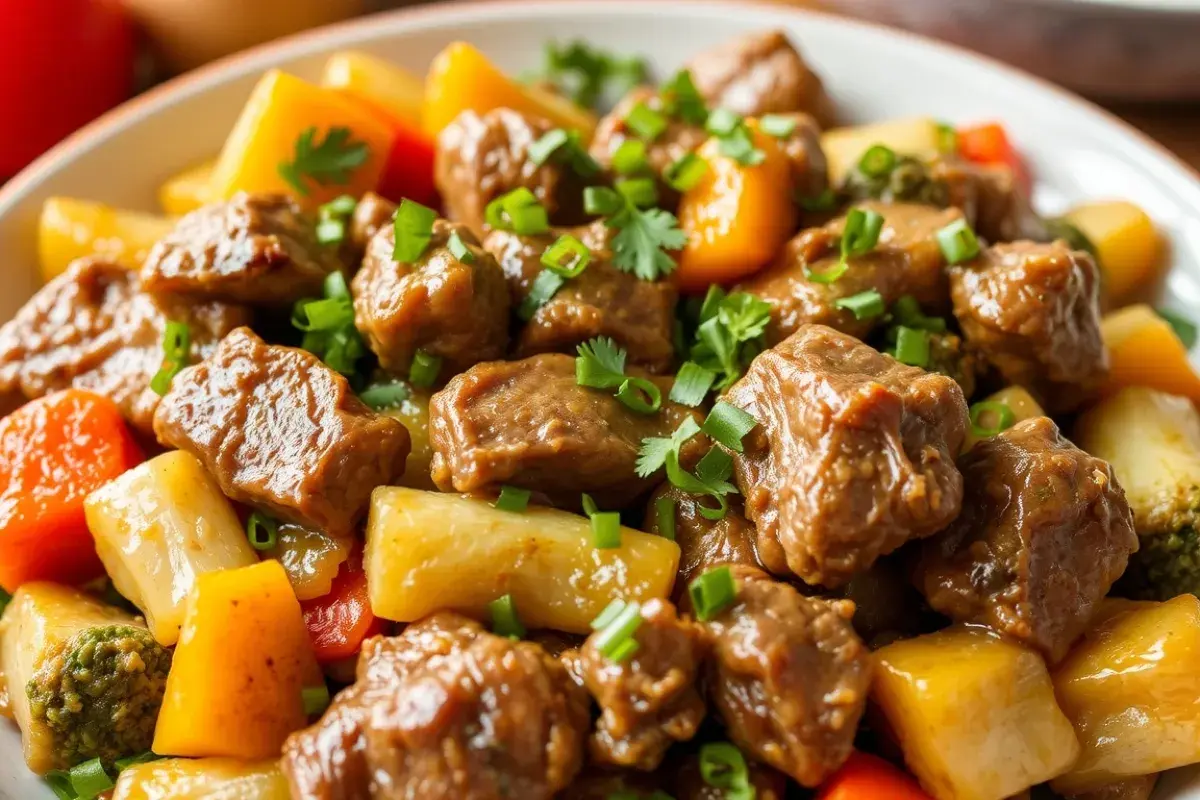Okay, let’s make some super yummy and healthy beef and veggie goodness! It’s going to be so tasty and good for you, and guess what? We’re going to make it together!
Beef and Veggie Adventure!
This recipe is awesome because it’s packed with flavor and energy to keep you going all day! Plus, it’s got beef and tons of colorful veggies—think of it as a superhero meal! Ready to become a kitchen hero? Let’s do it!
Table of Contents
What you’ll need (your superhero ingredients!):
- About 1 pound of beef—ask a grown-up to help you pick out a good one! We’re going to cut it into bite-sized pieces, like little treasure nuggets.
- Your favorite veggies! We’re thinking 1 bell pepper (any color! ), 1 zucchini, and 1 carrot. These are like our veggie power team!
- 1 onion—it might make you cry a little when you chop it, but it makes everything taste SO good!
- 2 cloves of garlic—these are like tiny flavor bombs!
- 2 tablespoons of olive oil—this is like our magic cooking potion.
- 1 can of diced tomatoes—these are juicy and yummy!
- Spices! We’ll use 1 teaspoon of salt, ½ teaspoon of pepper, and 1 teaspoon of your favorite dried herbs like oregano or thyme. Spices are like secret flavor boosters!
Let’s get cooking! (Superhero steps!)
- Wash your hands! Super important to get rid of any germs before we start our food adventure.
- Ask a grown-up to help you chop the veggies and beef. Be careful with knives! We want small pieces so everything cooks quickly and tastes amazing together.
- Get a big pan and put it on the stove. Ask a grownup to turn the stove on to medium heat. Carefully pour in the olive oil—sizzle!
- Throw in the onion and garlic. Cook them for about 5 minutes until they smell awesome and look a little soft. Smell that? That’s the magic starting!
- Add the beef pieces! Cook them until they turn brown—about 5-7 minutes. Stir it around so it cooks evenly.
- Now, dump in all the veggies! Bell pepper, zucchini, and carrots—the whole veggie crew! Stir them with the beef and onions.
- Pour in the diced tomatoes. Give it another good stir.
- Sprinkle in the salt, pepper, and herbs. Imagine you’re sprinkling fairy dust—flavor fairy dust!
- Turn the heat down to low, put a lid on the pan, and let it simmer for about 20 minutes. Simmering means it’s cooking gently, and all the flavors are getting to know each other and becoming best friends!
- Time to check if it’s ready! The veggies should be soft, and the beef should be cooked through. Smell it—it should smell totally delicious!
- Serve it up! You can eat it just like that in a bowl, or you can put it over rice or quinoa if you want to be extra fancy.
Taste Test Time!
Take a bite! Mmmmmm! Can you taste all the yummy flavors? The beef is tender, the veggies are sweet, and the spices make it just perfect! You made this! You’re a kitchen superhero!
Why this recipe is super cool:
- It’s packed with veggies—good for your body and makes you strong!
- Beef gives you the energy to play and learn all day long!
- It’s super tasty—you’ll actually want to eat your veggies!
- You can change it up! Don’t like zucchini? Use broccoli! Want it spicy? Add a pinch of chili flakes! It’s your kitchen adventure!
Cooking is awesome, right? You get to make yummy things and impress everyone with your kitchen skills! Enjoy your beef and veggie adventure! Let me know how it turns out! Maybe you can even teach me a new cooking trick next time!

